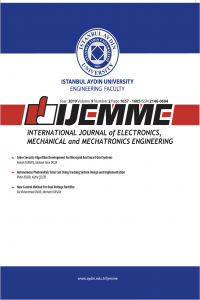COMPUTABILITY OF DESIGN BY MEANS OF ITS COGNITIVE CONTENT
COMPUTABILITY OF DESIGN BY MEANS OF ITS COGNITIVE CONTENT
Design activities based on intuition and induction cannot, presently, be substituted by computational means. Computers can only assist designers by providing examples, precedents, case studies, prototypes and their derivatives adapted specifically to the context of the problem. However choosing and adapting the appropriate solution remains a human prerogative. The failure to automate design as a whole is due, in a large measure, to the difficulty of finding computational means that can support learning, creativity, and judgment, which comprise much of the cognitive aspects of design. Computer support for innovative design must overcome the problem that designers necessarily make extensive use of situated tacit understanding while computers can only store and display explicit representations of information. This paper aims to understand tacit to explicit knowledge transformations in computed aided architectural design process
Keywords:
Tacit / explicit knowledge, design knowledge, design process, computability of design knowledge based computer aided design,
___
- Alexander C , Notes on the Synthesis of Form. Cambridge: Harvard University Press,1964.
- Alexander C, Ishikawa S, Silverstein M, Jacobson M, Fiksdahl-King I, Angel S , A Pattern Language: Towns, Buildings, Construction. University Press,1977 York: Oxford
- Rittel H, Webber M, “Dilemmas in a General Theory of Planning”, Policy Science. 4, 155-169.,1973
- Schön D , The Reflective Practitioner. New York: Basic Books,1983
- Schön D, The Design Studio. London: RIBA Publications, 1985. B
- Bronowski, J., The origins of knowledge and imagination, Yale University Press, New Haven, Connecticut,1978.
- Eastman, C.M., McCracken, W.M.(eds.), Design Knowing and Learning: Cognition in Design Education, W.C. Newstetter, Elsevier, 2001.
- Carrara,G., Kalay,Y.E. (eds.), Knowledge Computer-Aided Design, Elsevier, Netherlands, 1994. Architectural
- Coyne, R.D., Rosenman, M.A., Radford, A.D., Balachandran, M., Gero, J.S., Knowledge Addison Wesley, USA, 1989. Design Systems,
- Cross,N., “Designerly Ways of Knowing: Design Science”, Design Issues, 17(3)49-55, versus Design Cross,N., Designerly Ways of Knowing, Springer, Germany, 2006.
- Cross,N., Christiaans, H., Dorst, K.,(eds.) Analysing Design Activity, Wiley, Great Britain, 1996.
- Hansen M.T., Nohris N., Tierney T. “What is your strategy for managing knowledge?” ;77:106-16, 187 Bus Rev Kalay,Y.(ed.), Computability of Design, Wiley Science, New York, 1987.
- Kalay,Y.,Swerdloff,L.,Majkowski,B., “Process and Knowledge in Design Computation”, Journal of Architectural Education, 43(2)47-53,1990.
- Kunz W, Rittel H , How to Know What is Known: Designing Crutches for Communication. In Dietschmann HJ (Ed) (1984) Representation and Exchange of
- Knowledge as a Basis of Information Processes. North-Holland: Elsevier. 51- , 1984 Mitchell,W.J., Computer Aided
- Architectural Design, Van Nostrand Reinhold, New York, 1977.
- Stahl,G., “Interpretation in Design: The Problem of Tacit and Explicit Understanding in Computer Support of Cooperative Design”, Phd Thesis, Faculty of Graduate School of the University of Colorado, 1993
- Wyatt, C. J., “Management of explicit and tacit knowledge”, Journal of the Royal Society of Medicine, 94: January
- ISSN: 2146-0604
- Başlangıç: 2011
- Yayıncı: İstanbul Aydın Üniversitesi
Sayıdaki Diğer Makaleler
Pelin GORGEL, Ahmet SERTBAS, Osman N. UCAN
İlkay YELMEN, Nahide TOSYALIOGLU
Ayse KOCALMIS BILHAN, Erhan AKBAL
APPLICATION OF HIDDEN MARKOV CHAINS IN QUALITY CONTROL
Hanife DEMIRALP, Ehsan MOGHIMIHADJI
COMPUTABILITY OF DESIGN BY MEANS OF ITS COGNITIVE CONTENT
ANTIOXIDANT ACTIVITY OF ETHANOLIC EXTRACT FROM RUMEX CRISTATUS DC
Sibel KAHRAMAN, Refiye YANARDAG
THE EFFECTS OF DIGITALIZATION ON TURKISH CARICATURE
TARGET RECOGNITION WITH COLOR COMPONENTS AND SOBEL OPERATOR
